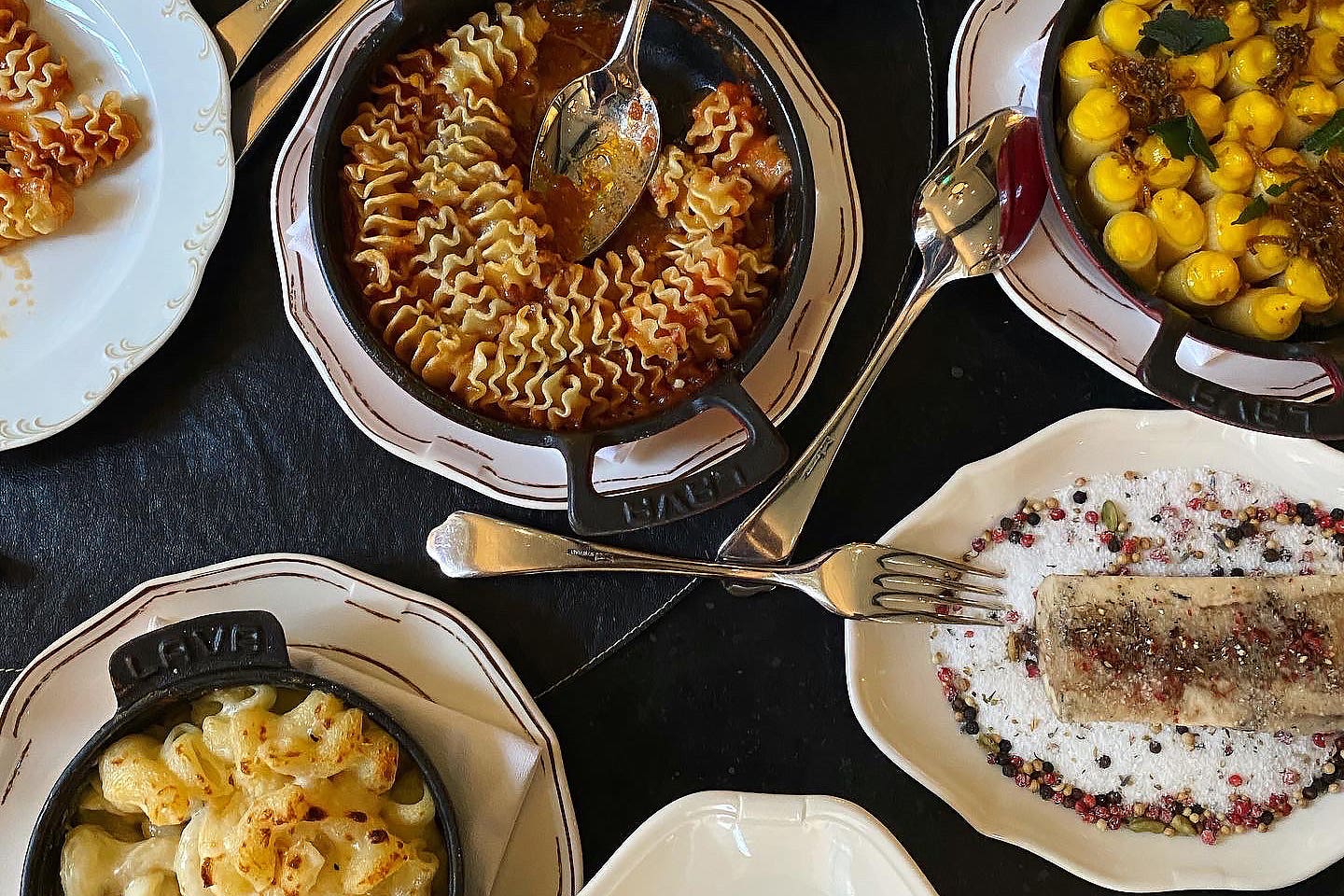
Don’t Skip the Crispy Carbs at Nancy Silverton’s Wood-Fired Hollywood Steakhouse
Unpacking the art of pasta al forno with the queen of California baking.
I recently paid a visit to Nancy Silverton’s newest project, the Barish, an Italian-inspired steakhouse on the ground floor of L.A.’s historic Hollywood Roosevelt hotel. The building is situated on the corner of Hollywood Boulevard and North Orange Drive, on the well-hoofed Walk of Fame. Built in 1927, it was the site of the original Academy Awards and since then, its restaurants, bars, and nightclubs have witnessed nearly a century of celebrity glitz, from Marilyn—who lived in one of the hotel’s cabana suites for two years before breaking into film—lounging poolside, to Lindsey Lohan and her ‘80s-themed 21st birthday party.
Early in the night’s service, however, the Barish felt a universe away from the surrounding bustle as Silverton’s executive chef, Armen Ayvazyan prepped for the evening’s service, calmly stoking the kitchen’s crackling wood-fired oven and stoves. In addition to the restaurant’s signature steaks and chops and an unsurprisingly lovely dessert menu—Silverton was the founder of the La Brea Bakery, after all—I noticed something unusual on the menu: a section dedicated to baked pasta.
I couldn’t resist ordering the lot, and I didn’t regret it. The four generous portions of crispy, gooey, slightly smoky, wood-fired carbs were all vastly different from one another, each a well-balanced celebration of its own seasonal ingredients, with far more interesting layers of texture and flavor than even the most deftly executed carbonara.
Since then, I’ve found myself again and again considering the endless possibilities of pasta al forno, leaving my usual stainless sautée pan on the hook as I tip a few ounces (or who am I kidding, pounds) of well-dressed macaroni into an iron casserole before sliding it all under the broiler.
Still inspired, and more than a little bit bewitched by Silverton’s ability to quietly reimagine a whole category of carbs I hadn’t even given a second glance, I wanted to learn more. So I tracked her down on the phone on her way from Copenhagen to Bologna to talk about the inspiration behind the Barish, cooking with cheese, and life as a baker in a savory kitchen.
This interview has been edited and condensed for clarity.
Kat: Nancy, hello! Thanks for taking a few minutes to chat while you're on the road. I was so bummed I missed you when I ate at the Barish. When I was working as a pastry chef, Pastries from the La Brea Bakery was one of my favorite books. There’s that prune muffin recipe in there that has coffee in the batter that I still love so, so much.
Nancy: Thank you! That's so funny that you're mentioning that book. I'm doing a new baking book right now actually. I thought this new one would be really simple, and it's not simple. But it's really just everything that I would really want in a cookbook—the best stuff, like the best pound cake and the best chocolate chip cookie. I don't want to call it “classics,” but it's kind of like that. So, I’m sort of returning to that baking world again.
Have you missed baking, since you've been focused so much more on savory cooking?
You know, I do miss it, but when I think about, say, bread baking, or even what I'm doing right now for this book, it's all such a commitment. I get so obsessed and I just don't have the ability to make one thing—to say okay, I like it, that's tasty, and then move on. I have to think, well, what if I added just a hint more salt and maybe a few grains of nutmeg? And then I make the whole thing over and it's like, well, I don't really like that, but what if…? So I kind of stepped aside from the baking world because it's so all-consuming for me and it just doesn't allow for anything else. A`nd I get in people's way! But yes, I'm on hiatus from the baking world and I do miss it.
You’re at the head of several restaurants and of course you can’t be in all of them, all the time. Who is helping you lead the Barish?
Well, I did want to let you know about Armen, who is the chef. I'm so excited about working with him. He's a really talented cook, and young. He's one of those cooks who is so enthusiastic, but what I like about him is that he's been able to hone in his enthusiasm, so his food is not confusing. You know, I'm finding a lot of confusing food out there these days!
Overly handled, for sure.
Overly everythinged! But Armen thinks really, really on many levels towards food, more layered than even I do, which makes me so excited to work with him, because he kind of goes off where I stop. But I've made it a point to be able to hone in also, to take away or eliminate some of the ingredients and some of the steps that may be not that necessary. It's been a really interesting collaboration.
When the opportunity to open a restaurant at the Hollywood Roosevelt came my way, I knew I would be very focused on certain things. One is that I wanted to bring sort of an old Hollywood world to the Barish. I wanted to make certain that I didn't do a menu that you could have gotten 15 minutes away or 10 minutes away at [my other restaurants,] the Osteria or chi SPACCA.
My original choice of chefs to head the ship were a husband and wife team I had been working with over the last couple years. We came up with a new menu, kind of similar to what I've done before. Anyway, during the pandemic, when we were ready to open as a popup, they came to me and said, “you know what? We've been thinking for the last several months, and we are going to move. We're not staying in Los Angeles.” So I had to very quickly look around to see if there were other cooks around who were familiar with working with wood, because there's not a lot of people out there who are comfortable with it. I don't know if you noticed but the front line of the kitchen, even though we do have a back prep kitchen, has no open flames. It's only wood, both the oven and the hearth, so I was limited to who I could reach out to.
It was a little bit challenging and I had to figure out something really quickly. In the end I was really lucky to find somebody who’s energetic, and I just love his temperament. He is running a kitchen with such maturity, even though he's 30 years old. And I don't mean maturity with an iron fist, but maturity as far as how to lead a kitchen and mentor people. And that's what's always been so important to me.
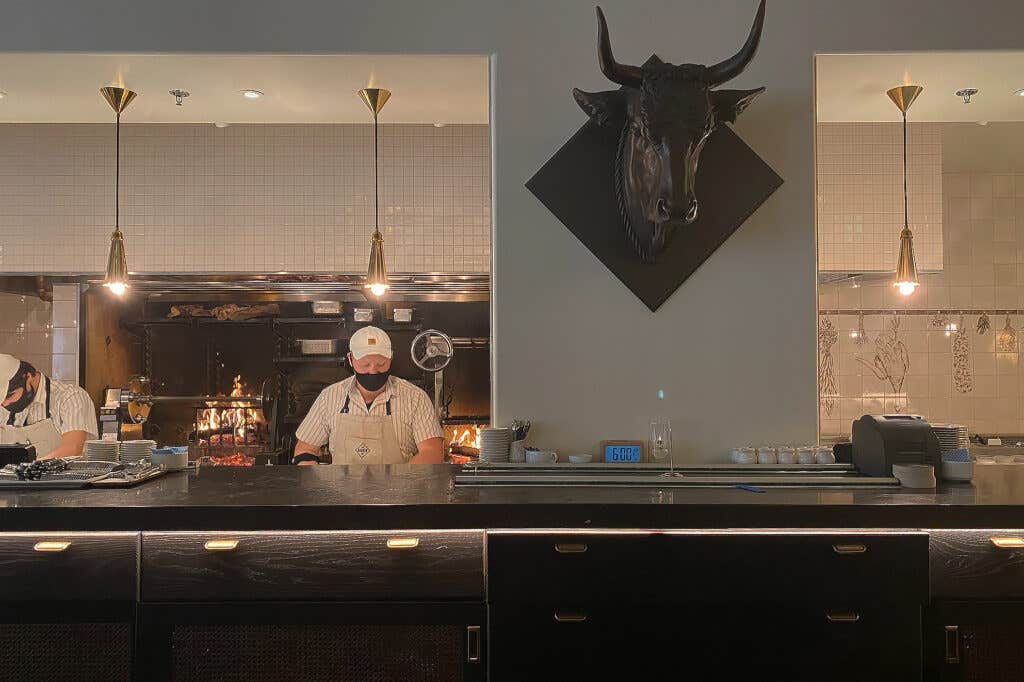
Tell me more about the wood-fired concept.
Since my days in Spago with Wolfgang, I’ve always brought that wood-fired element. It really stuck with me and it certainly was a major focus of the menu at Campanile, and then also at the Osteria, and certainly at the pizzeria. It's a style of cooking that I really appreciate. I'm not a person who likes to cook with all sorts of different machinery. I like very basic elements. I like pans. I like wood. I like rolling pins and spoons, and all that sort of feeling, more so than fancy equipment and food that's overly manipulated. So from the beginning, when I first sat down with the people managing the hotel who brought me in, I said, “I want a dining room in this kitchen.” There wasn't one. So that's what we built. And in the plan, I didn't find a reason to do any sauté cooking because I felt that wasn't the kind of food that I wanted to highlight. And then, in putting in a wood-burning oven, it gave me the ability to do something that I wanted to do for a while, which is the idea of having an Italian restaurant with baked pastas.
I love that part of the menu. And don’t think I’ve seen something like that before. Was that section part of the vision from the beginning?
From the very beginning, yes. I just thought—well, I knew that having this Italian restaurant meant that I had to have pasta because people were going to expect that. But I mean, everybody is doing the same pastas. Some are better than others, but I think, in every city, in every town, across the country, you could get a really well-crafted pasta. That wasn't the case 15 years ago. I was excited when I opened the Osteria, because there were only a handful of restaurants that were doing pasta with the Italian sensibility. But I feel like everyone has that now, so I really wanted to bring a baked element into it. And now I have the excuse to do it because I have a wood-fired oven and I don't have a sauté pan!
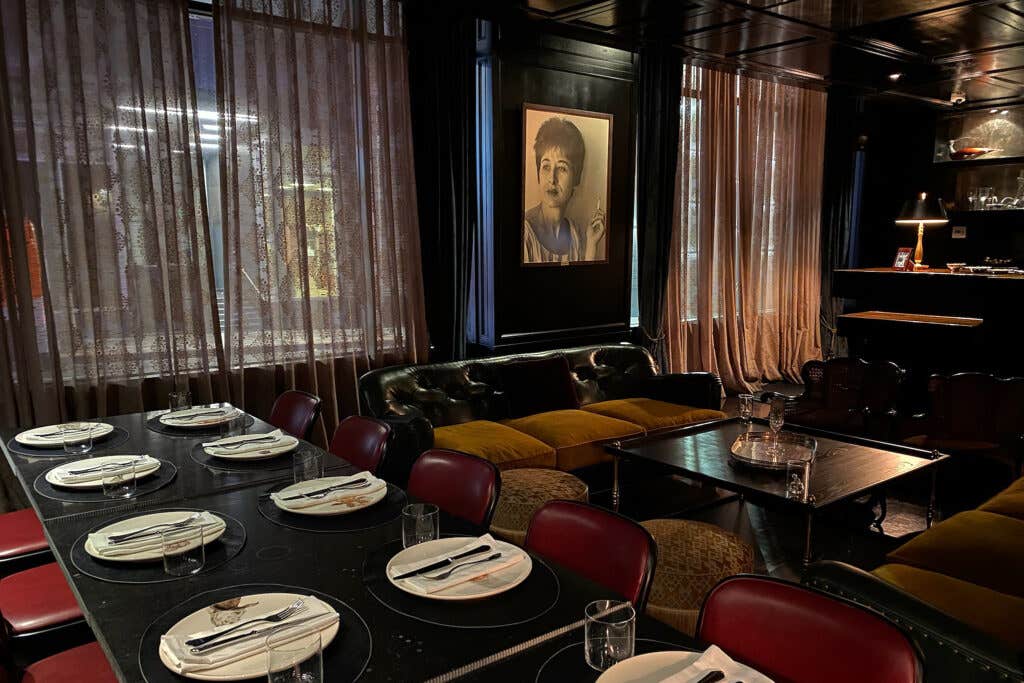
Do you see the baked pasta menu as a set lineup, or will you and Armen be changing up those dishes?
Well, we haven't really unveiled that pasta element as much as I would like yet. But it is interesting, it's on the menu as “pasta al forno,” and I’m always hoping that people understand, pasta in the oven. But sometimes they don't. So there are a lot of customers who are confused and will say things like, “wait a minute, there's something wrong with your pasta. It's crunchy on top,” that kind of thing. So we have to work on our delivery, and to sort of let the customer know, without making them feel bad—“do you know what ‘pasta al forno’ means, and what it's supposed to be?” If they think “macaroni and cheese,” then yes, they know it's crunchy on top, and it's supposed to be. But we have sort of backed off a little. It's not all quite as crusty as I originally envisioned it! But that's okay.
I was hoping we could get your radiatore with lamb sugo recipe for our readers—it’s such a great dish!—but I understand that it would be tough to do in a home kitchen. It has some smoked ingredients in it, right?
Yeah, the tomato is smoked. No one is going to make that dish at home! But maybe the torchio, which is basically macaroni and cheese, or even the rotolo with a little bit of practice. There are several steps to the rotolo because you're cooking the swiss chard for the filling, and you're rolling out the sheets of pasta—although you could probably get away with blanching sheets of an artisanal dried pasta. Then it's rolled up, poached, and sliced. It's not necessarily a user-friendly recipe! But I really enjoy the shapes and the process.
I thought what was so cool about that dish was that everyone always wants the cheesy, crispy corner piece of the lasagna, right? And everybody gets to enjoy those crispy bits when you finish the pasta by the slice in the oven.
Yep, exactly. And that was the reason for that. Massimo Bottura does a dish that is sort of inspired by just the ends of the lasagna. There are so many dishes that I really want to recreate that have to do with picking off everything that's stuck to the pan. Those are always the best things, right? Like the onions that caramelize and stick to the pan with the roasted potatoes. It is always the best part.
At the elemental level, when you're developing these baked pasta recipes, are there specific traits that you want each dish to have?
They have to have the texture right. One of the ones that I did early on that hasn't made it to the menu is a gnocchi bolognese. You can't really bake gnocchi—there's not enough texture to them, so it just eats mushy, you know? But the radiatore is so good because that radiator-shaped pasta gives you all the texture you could want. And the torchio—that bell shape bakes really well too.
Any tips for the ideal cooking vessels for baked pastas? What material do you like the best?
Certainly copper is wonderful. Cast iron is too. It's a little bit challenging finding dishes in just the right size that actually have longevity. We originally started with ones that were made to go into the oven, and the handles started breaking off, so right now we have more cast iron, which definitely lasts!
Do you prefer enameled or seasoned cast iron?
Either, really. Ours are slightly enameled on the outside, but either are okay. Le Creuset is fine, as long as you can get the right size, and also obviously the right depth. They shouldn’t be too deep.
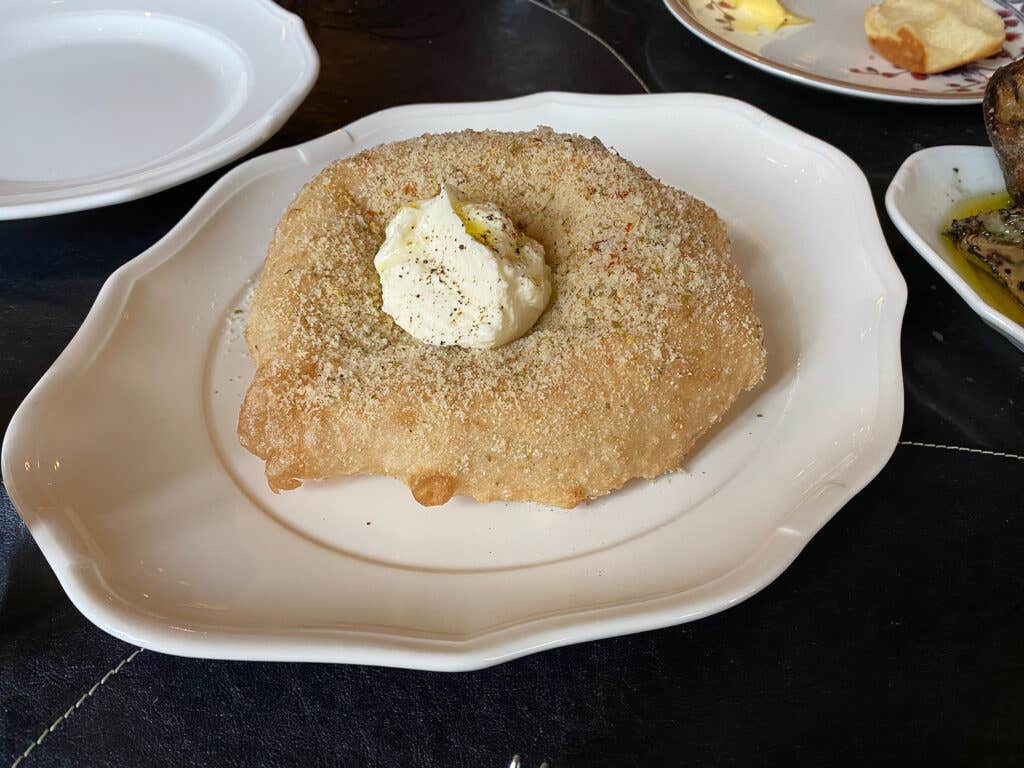
Cheese seems really important on your menu. I used to be a cheesemonger, so it's really important to me too!
Well. I'll tell you, I'm a cheese lover of all sorts. And one of my favorite places to buy cheese anywhere is in Neal's Yard Dairy, which I did several visits to in London the last couple times I've been there. When I had La Brea Bakery, we used to have a lovely and well-curated cheese program there, and we bought a lot from Neal's Yard, and I think that the way that they handle their cheese is just so perfect. Everything you buy from them is in such perfect shape.
Yes! Which cheeses are you most excited to have on the menu right now?
Well, I really love the ricotta that we're working with, from Bellwether Farms. They make such a delicious ricotta, and that's on top of our pizza fritti. We certainly have our Parmigiano-Reggiano, and the cheeses that go into the torchio. We have a blue cheese—the gorgonzola that goes with the wedge salad. But I'm just loving that Jersey ricotta from Bellwether Farms. It really is delicious.
Does Bellwether also make the butter that you're serving with those fluffy pull-apart rolls?
No, that is a French butter, Beurre de Baratte from Rodolphe Le Meunier. And I don't know if you know this, but in that hotel, I learned that they wanted me to take over two sections of the food service, one was where the Barish is, and the other one was where there was a club called Teddy's. Teddy's was kind of a nightclub that was one of those ones where you had to know somebody to get in. When you walk in, it's dark, it has a disco ball, but it's like a complete cave. That's going to become Lorenzo's and it's going to be a wine and cheese bar where the plan is to have four tables that you have to reserve—minimum four people—and they're going to be fondue tables. So a wine and cheese bar with a fondue component. Hopefully it'll be done by the end of March. If you were going to ask me this in a few months, I would really be able to give you a complete answer on how my cheese purchasing was going, because that's where it's really going to showcase. There's not going to be any cooking in there, but there will be cheese melters, and sandwich presses to make English style toasties, Welsh rarebit, things like that. So I'm really excited, because I do love cheese.
So it will have an Italian name, but it doesn't sound like it's going to be a particularly Italian menu!
Well, it has an Italian name because it's named after my father, who was not Italian. His name was Lawrence, and he grew up in Sioux Falls, South Dakota. So as far away from Italy as you could be. But he too had a love of Italy, and he called himself Lorenzo. So that's why it's going to be called Lorenzo's. And the Barish was named after his mother's side of the family.
Well, thank you so much for getting on the phone, Nancy! I know you're super busy and in another time zone right now, so I don't want to keep you any longer.
Oh, such a pleasure!
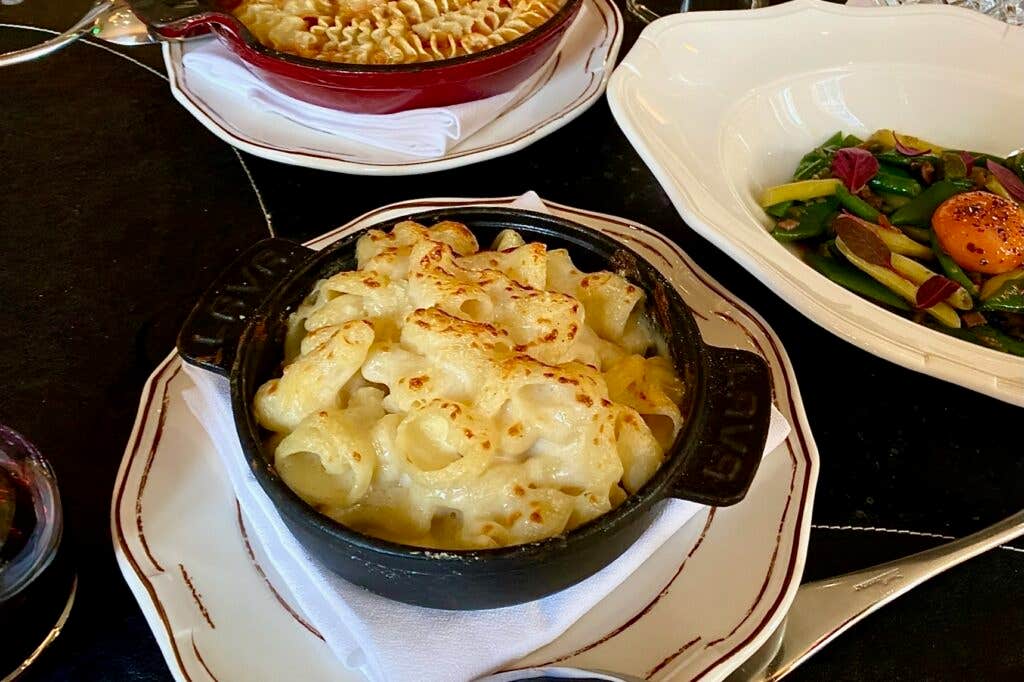
Keep Reading
Continue to Next Story










